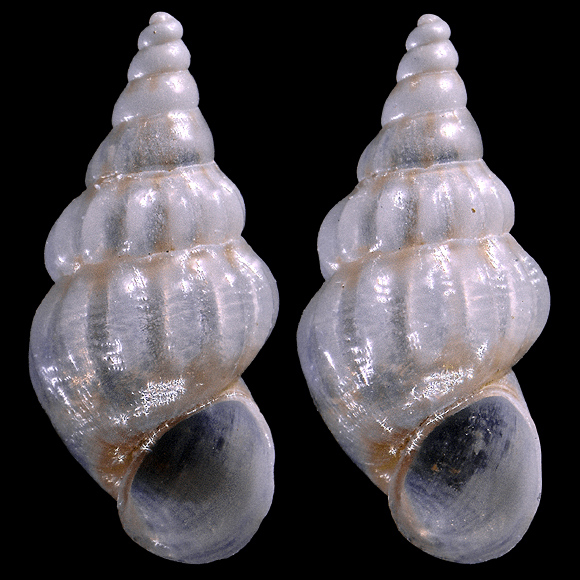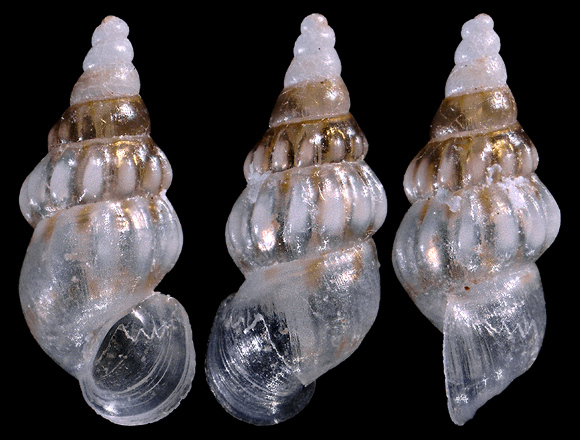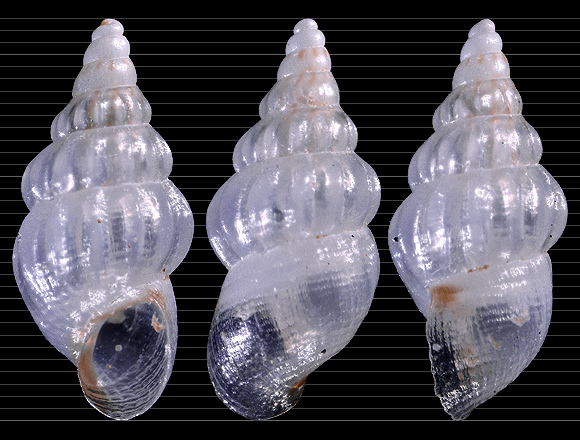
Grazer and detritus feeder in the infralittoral.
« The great majority of the shells is colourless and vitreous, or white. In such shells, the upper whorls have the same colour as the lower part of the shell, except for the nucleus of the apex, which may be tinged with brown. Often, three brown spots can be seen at the aperture. Moreover, a characteristic pattern of more or less weak yellowish colour lines and spots can be seen on the body whorl of part of the shells. Occasionally, part of the shell may be brown, or brown spiral bands may be present. Punctate spiral striae are well developed in some shells and weak to absent in others. The lower whorls of part of the shells are ribbed; such shells have a conspicuously inflated habitus. The number of ribbed whorls usually is about 1 to 2½, but completely ribless shells are locally far from rare. » – A. Verduin: “On the taxonomy and variability of recent European and North African species of the subgenera Apicularia and Goniostoma of the genus Rissoa”, Basteria vol. 49, 1985, p.120.
Uvala Sabuša, southeastern coast of Molat island, Zadar Comitat, W. Croatia. 3,2-3,2mm.

Verduin: « R. scurra differs from R. similis in the larger dimensions of the apex, in the absence of shells which measure over 3.5mm, in the absence of a labial rib, in the absence of purplish colours, in the colour pattern, and in the distribution. In particular the differences in the dimensions of the apex are very consistent among the large numbers of shells of both species examined. »
Dwarf adult with an interesting repair, from 4-6m deep, Cala d’Alivu, Isola Rossa, NW. Corsica. 2,7mm.

« The nucleus of R. scurra is not as inflated and prominent as it is in well preserved apices of R. lia. Also, the dimensions of the apex on the average proved to be slightly larger in R. scurra. With the help of these characters, in combination with the colour of the upper whorls and apex, which tends to be different in R. lia, I no longer had difficulties in separating shells of both species in a satisfactory way. »
In fact, the most remarkable feature is – in fully adult shells – the total absence of longitudinal beads in the last whorl; the latter is adorned only with some soft radial and spiral microsculpture, and is markedly less developed in diameter than the whorl immediately preceding it, which is extremely convex (the « inflated habitus » in Verduin) and shows a set of 12-13 big rounded longitudinals.
In fact, the most remarkable feature is – in fully adult shells – the total absence of longitudinal beads in the last whorl; the latter is adorned only with some soft radial and spiral microsculpture, and is markedly less developed in diameter than the whorl immediately preceding it, which is extremely convex (the « inflated habitus » in Verduin) and shows a set of 12-13 big rounded longitudinals.
Large adult from Uvala Sabuša. 3,3mm.